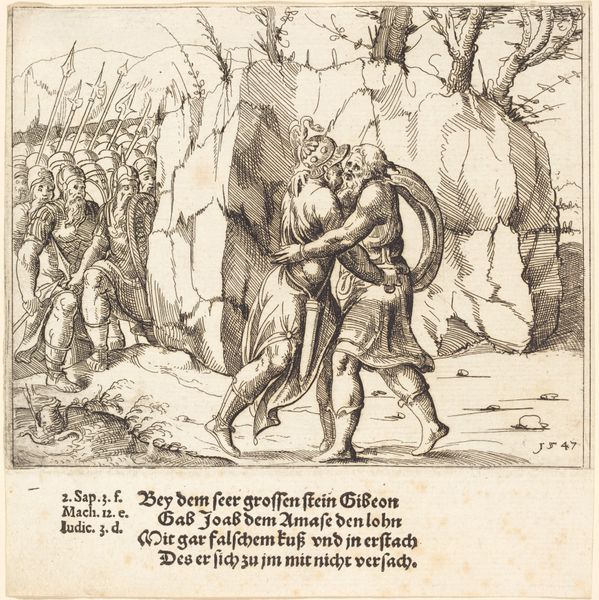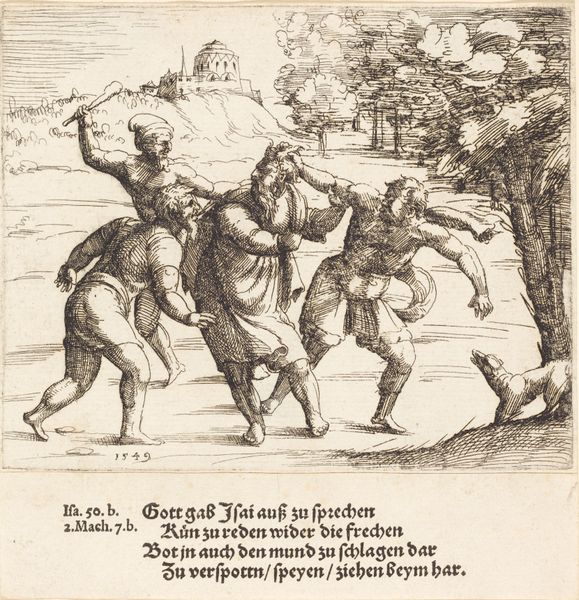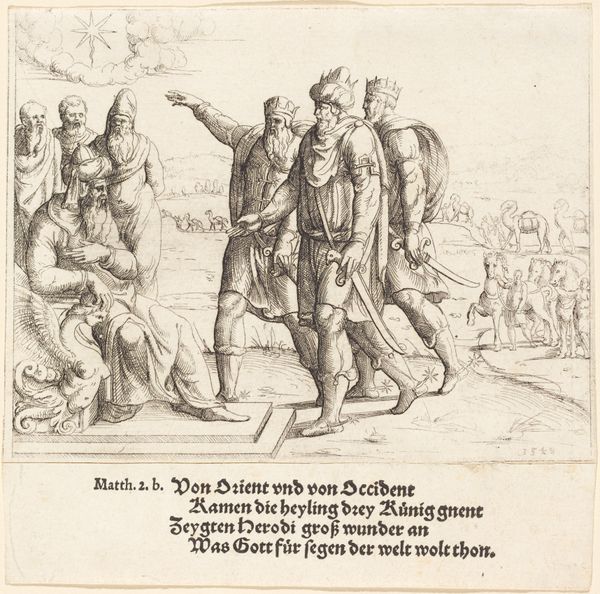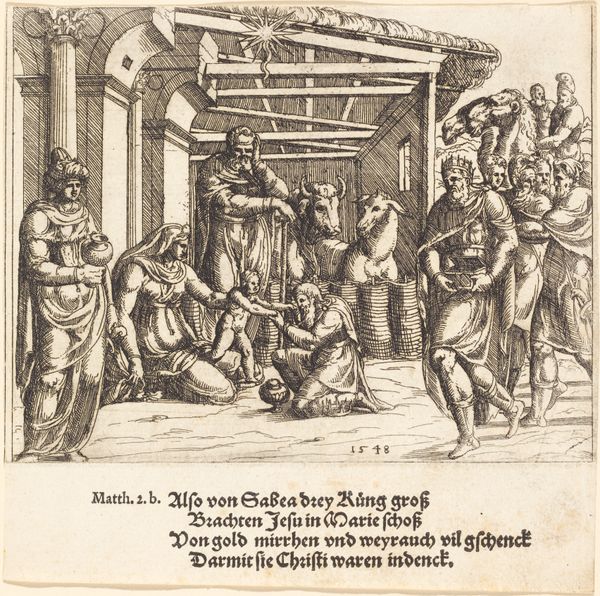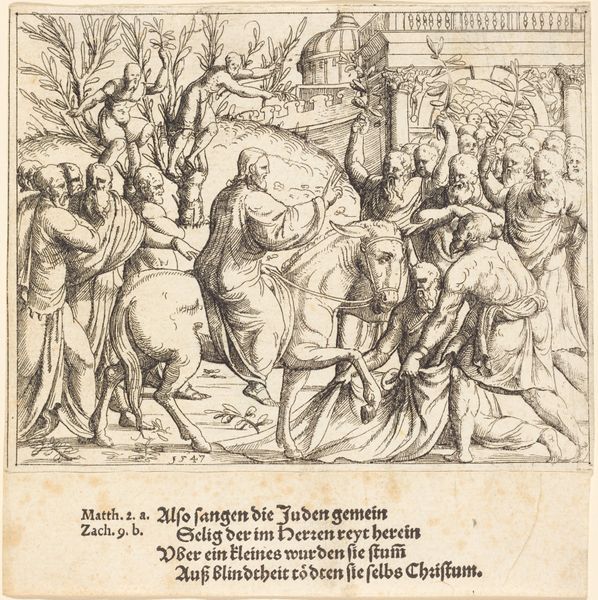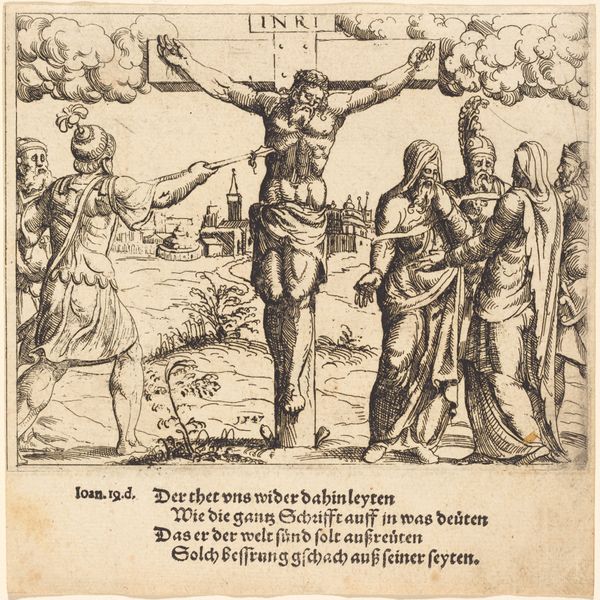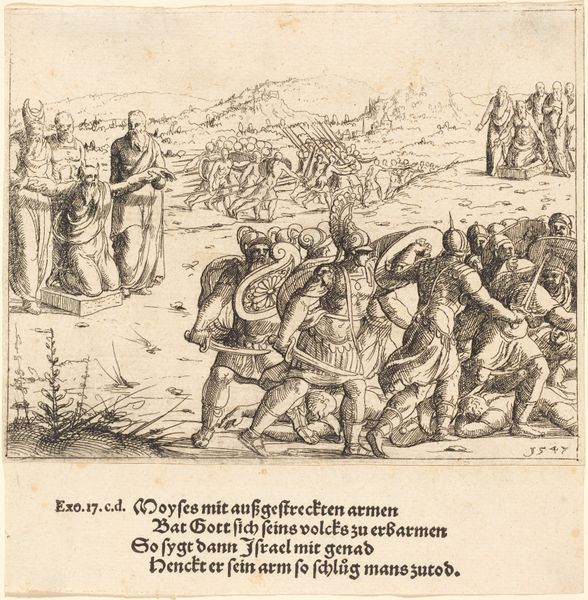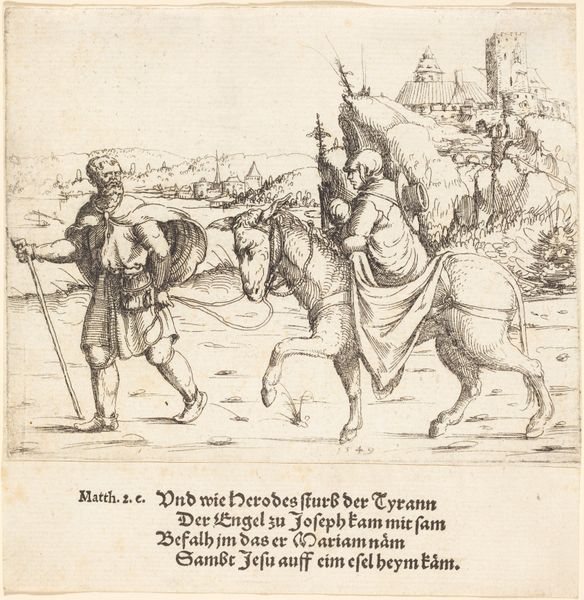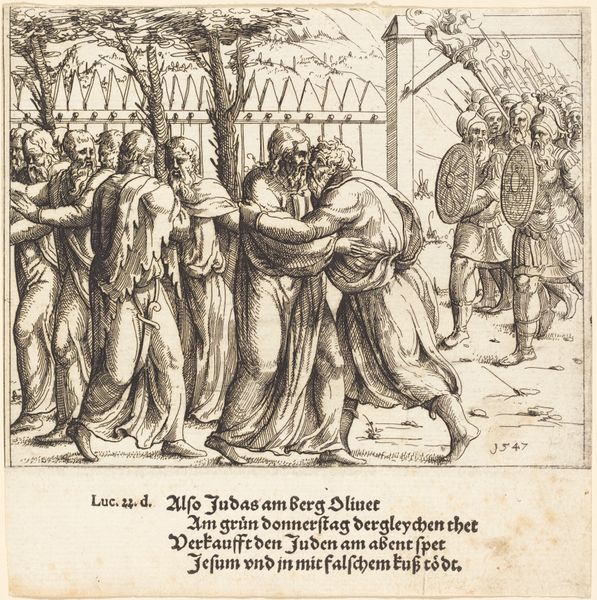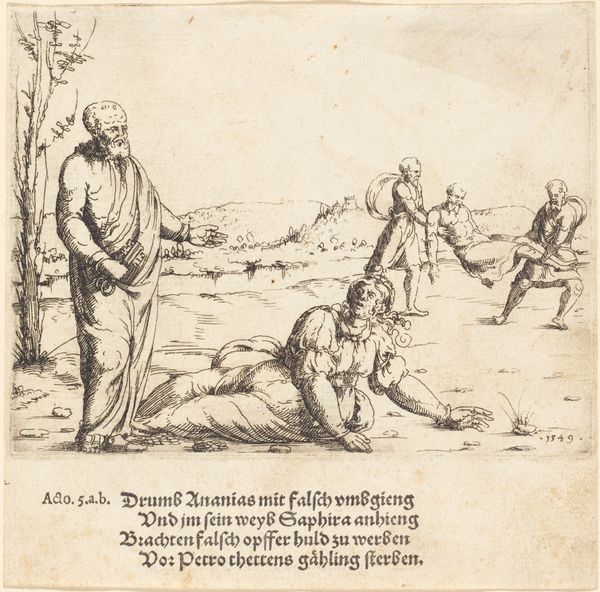
Copyright: National Gallery of Art: CC0 1.0
Editor: So, this is Augustin Hirschvogel's "Absalom Slain by Joab," an engraving from 1548. It's small but incredibly detailed! It feels very dramatic and action-packed. What do you see in this piece? Curator: Ah, Hirschvogel! He knew how to tell a story. Immediately, my eyes are drawn to the chaos, the swirling lines almost vibrating with tension. Can you see how the artist used the line work to emphasize the frantic energy of the scene? There's a rawness that really draws me in. Editor: Yes, especially the contrast between the frantic horses and Absalom who's...sort of stuck? Does his being stuck in the tree have symbolic meaning? Curator: Absolutely! Think of it as a visual metaphor. Absalom's ambition, his desire to usurp his father David, has literally caught him. It’s poetic justice visualized! The tree becomes a symbol of divine intervention. Have you noticed how Hirschvogel depicts the soldiers, their armor and weapons almost blurring into a single, relentless force? Editor: Now that you mention it, the horses and soldiers seem almost inhuman compared to Absalom's...almost serene expression? It is a very interesting artistic choice, what do you think it suggests? Curator: Intriguing, isn’t it? Perhaps a reflection on the fleeting nature of power, how easily one can fall from grace. I am particularly drawn to the vulnerability. And, the detail he manages with just lines! It's remarkable, wouldn't you agree? Editor: I do. Thinking about the level of detail that engravings can offer really highlights how much storytelling an artist could include within these parameters. I'll certainly look at engravings differently from now on! Curator: Excellent, because I certainly find that art is something we return to because each viewing brings new knowledge, new emotional resonance.
Comments
No comments
Be the first to comment and join the conversation on the ultimate creative platform.


